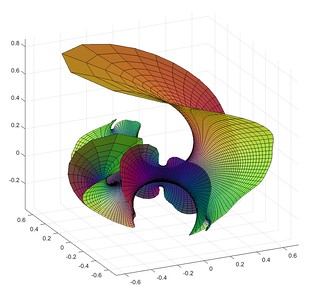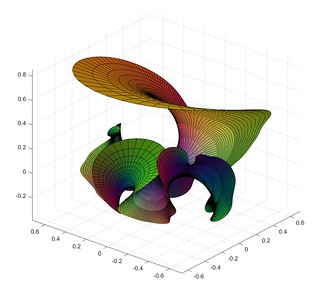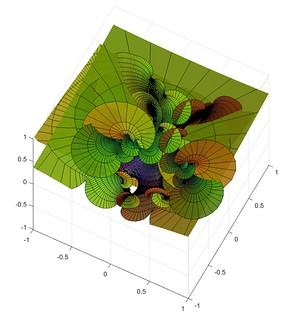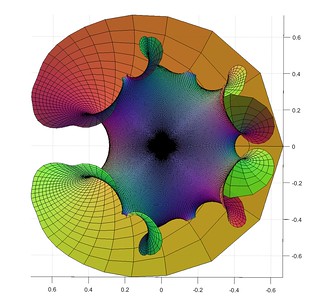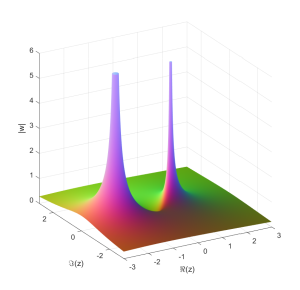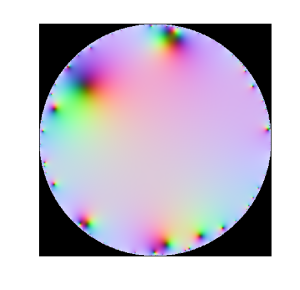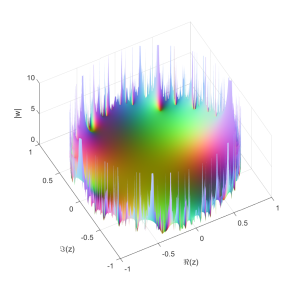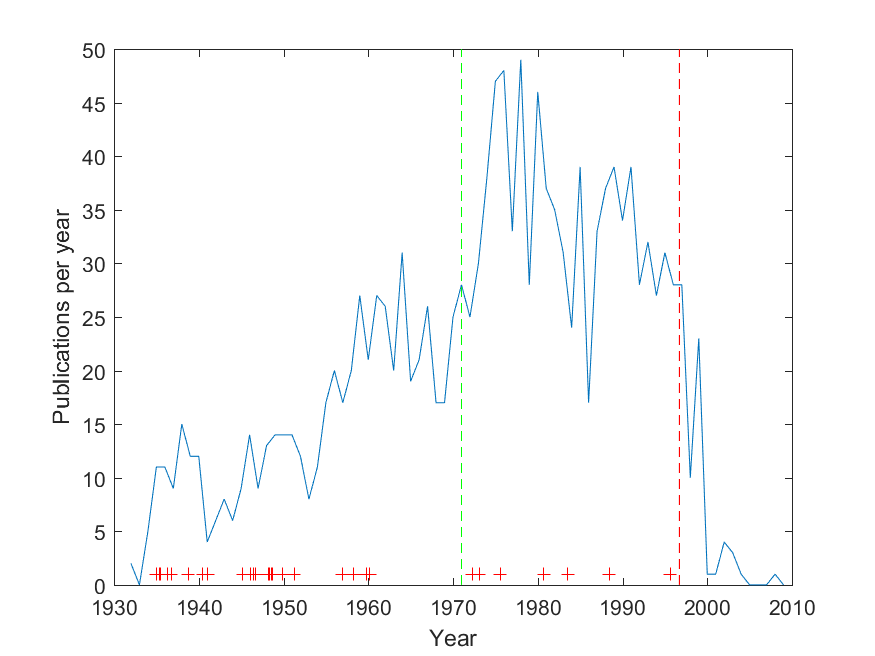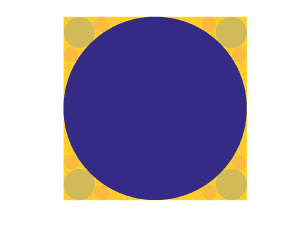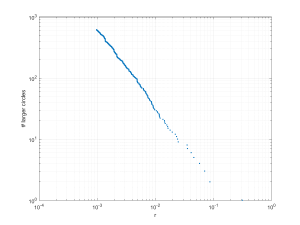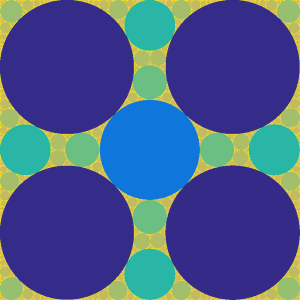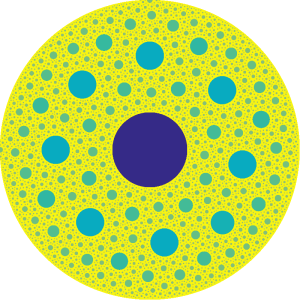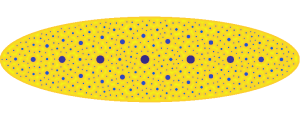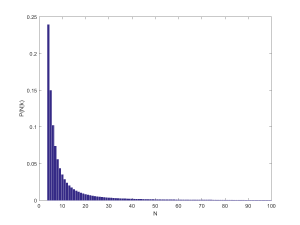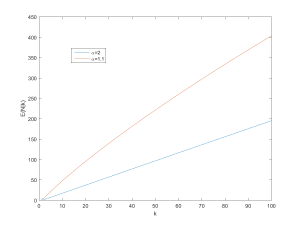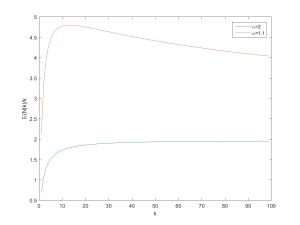 My talk “Morphological freedom: what are the limits to transforming the body?” was essentially a continuation of my original morphological freedom talk from 2001. Now with added philosophical understanding and linking to some of the responses to the original paper. Here is a quick summary:
My talk “Morphological freedom: what are the limits to transforming the body?” was essentially a continuation of my original morphological freedom talk from 2001. Now with added philosophical understanding and linking to some of the responses to the original paper. Here is a quick summary:
Enhancement and extensions
I began by a few cases: Liz Parrish self-experimenting with gene therapy to slow her ageing, Paul Erdös using drugs for cognitive enhancement, Todd Huffman exploring the realm of magnetic vision using an implanted magnet, Neil Harbisson gaining access to the realm of color using sonification, Stelarc doing body modification and extension as performance art, and Erik “The Lizardman” Sprague transforming into a lizard as an existential project.
It is worth noting that several of these are not typical enhancements amplifying an existing ability, but about gaining access to entirely new abilities (I call it “extension”). Their value is not instrumental, but lies in the exploration or self-transformation. They are by their nature subjective and divergent. While some argue enhancement will by their nature be convergent (I disagree) extensions definitely go in all directions – and in fact gain importance from being different.
Morphological freedom and its grounding
 Morphological freedom, “The right to modify one’s body (or not modify) according to one’s desires”, can be derived from fundamental rights such as the right to life and the right to pursue happiness. If you are not free to control your own body, your right to life and freedom are vulnerable and contingent: hence you need to be allowed to control your body. But I argue this includes a right to change the body: morphological freedom.
Morphological freedom, “The right to modify one’s body (or not modify) according to one’s desires”, can be derived from fundamental rights such as the right to life and the right to pursue happiness. If you are not free to control your own body, your right to life and freedom are vulnerable and contingent: hence you need to be allowed to control your body. But I argue this includes a right to change the body: morphological freedom.
One can argue about what rights are, or if they exist. If there are such things, there is however a fair consensus that life and liberty is on the list. Similarly, morphological freedom seems to be so intrinsically tied together with personhood that it becomes inalienable: you cannot remove it from a person without removing an important aspect of what it means to be a person.
These arguments are about fundamental rights rather than civil and legal rights: while I think we should make morphological freedom legally protected, I do think there is more to it than just mutual agreement. Patrick Hopkins wrote an excellent paper analysing how morphological freedom could be grounded. He argued that there are three primary approaches: grounding it in individual autonomy, in human nature, or in human interests. Autonomy is very popular, but Hopkins thinks much of current discourse is a juvenile “I want to be allowed to do what I want” autonomy rather than the more rational or practical concepts of autonomy in deontological or consequentialist ethics. One pay-off is that these concepts do imply limits to morphological freedom to undermine one’s own autonomy. Grounding in human nature requires a view of human nature. Transhumanists and many bioconservatives actually find themselves allies against the relativists and constructivists that deny any nature: they merely disagree on what the sacrosanct parts of that nature are (and these define limits of morphological freedom). Transhumanists think most proposed enhancements are outside these parts, the conservatives think they cover nearly any enhancement. Finally, grounding in what makes humans truly flourish again produces some ethically relevant limits. However, the interest account has trouble with extensions: at best it can argue that we need exploration or curiosity.
One can motivate morphological freedom in many other ways. One is that we need to explore: both because there may be posthuman modes of existence of extremely high value, and because we cannot know the value of different changes without trying them – the world is too complex to be reliably predicted, and many valuable things are subjective in nature. One can also argue we have some form of duty to approach posthumanity, because this approach is intrinsically or instrumentally important (consider a transhumanist reading of Nietzsche, or cosmist ideas). This approach typically seem to require some non-person affecting value. Another approach is to argue morphological freedom is socially constructed within different domains; we have one kind of freedom in sport, another one in academia. I am not fond of this approach since it does not explain how to handle the creation of new domains or what to do between domains. Finally, there is the virtue approach: self-transformation can be seen as a virtue. By this perspective we are not only allowed to change ourselves, we ought to since it is part of human excellence and authenticity.
Limits
Limits to morphological freedom can be roughly categorized as practical/prudential, issues of willingness to change/identity, the ethical limits, and the social limits.
Practical/prudential limits
Safety is clearly a constraint. If an enhancement is too dangerous, then the risk outweighs the benefit and it should not be done. This is tricky to evaluate for more subjective benefits. The real risk boundary might not be a risk/benefit trade-off, but whether risk is handled in a responsible manner. The difference between being a grinder and doing self-harm consists in whether one is taking precautions and regard pain and harms as problems rather than the point of the exercise.
There are also obvious technological and biological limits. I did not have the time to discuss them, but I think one can use heuristics like the evolutionary optimality challenge to make judgements about feasibility and safety.
Identity limits
 Even in a world where anything could be changed with no risk, economic cost or outside influence it is likely that many traits would remain stable. We express ourselves through what we transform ourselves into, and this implies that we will not change what we consider to be prior to that. The Riis, Simmons and Goodwin study showed that surveyed students were much less willing to enhance traits that were regarded more relevant to personal identity than peripheral traits. Rather than “becoming more than you are” the surveyed students were interested in being who they are – but better at it. Morphological freedom may hence be strongly constrained by the desire to maintain a variant of the present self.
Even in a world where anything could be changed with no risk, economic cost or outside influence it is likely that many traits would remain stable. We express ourselves through what we transform ourselves into, and this implies that we will not change what we consider to be prior to that. The Riis, Simmons and Goodwin study showed that surveyed students were much less willing to enhance traits that were regarded more relevant to personal identity than peripheral traits. Rather than “becoming more than you are” the surveyed students were interested in being who they are – but better at it. Morphological freedom may hence be strongly constrained by the desire to maintain a variant of the present self.
Ethical limits
Beside the limits coming from the groundings discussed above, there are the standard constraints of not harming or otherwise infringing on the rights of others, capacity (what do we do about prepersons, children or the deranged?) and informed consent. The problem here is not any disagreement about the existence of the constraints, but where they actually lie and how they actually play out.
Social limits
There are obvious practical social limits for some morphological freedom. Becoming a lizard affects your career choices and how people react to you – the fact that maybe it shouldn’t does not change the fact that it does.
There are also constraints from externalities: morphological freedom should not unduly externalize its costs on the rest of society.
My original paper has got a certain amount of flak from the direction of disability rights, since I argued morphological freedom is a negative right. You have a right to try to change yourself, but I do not need to help you – and vice versa. The criticism is that this is ableist: to be a true right there must be social support for achieving the inherent freedom. To some extent my libertarian leanings made me favour a negative right, but it was also the less radical choice: I am actually delighted that others think we need to reshape society to help people self-transform, a far more radical view. I have some misgivings about the politics of this, prioritization tends to be nasty business, it means that costs will be socially externalized, and in the literature there seem to be some odd views about who gets to say what bodies are authentic or not, but I am all in favour of a “commitment to the value, standing, and social legibility of the widest possible (and an ever-expanding) variety of desired morphologies and lifeways.”
Another interesting discourse has been about the control of the body. While in medicine there has been much work to normalize it (slowly shifting towards achieving functioning in one’s own life), in science the growth of ethics review has put more and more control in the hands of appointed experts, while in performance art almost anything goes (and attempts to control it would be censorship). As Goodall pointed out, many of the body-oriented art pieces are as much experiments in ethics as they are artistic experiments. They push the boundaries in important ways.
Touch the limits
In the end, I think this is an important realization: we do not fully know the moral limits of morphological freedom. We should not expect all of them to be knowable through prior reasoning. This is a domain where much is unknown and hard for humans to reason about. Hence we need experiments and exploration to learn them. We should support this exploration since there is much of value to be found, and because it embodies much of what humanity is about. Even when we do not know it yet.
, the Taylor series that only includes all prime powers, combined with
.
